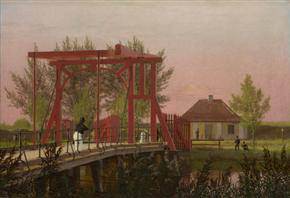
Teruya Yuken
Notice-Forest, 2005
Paper bag, glue
18 cm x 8 cm x 28 cm
Solomon R. Guggenheim Museum, New York

Shiga Lieko
Wedding Veil, 2007
C-Print
Can There Be Art? The creative potential of modern Japan at Mori Art Museum
The Mori Art Museum presents “Roppongi Crossing 2010:Can There Be Art?” from Saturday, 20 March to Sunday, 4 July2010. “Roppongi Crossing” is a series of exhibitions, heldonce every three years by the Mori Art Museum, located onthe top floor of the Roppongi Hills Mori Tower in the heart ofTokyo
]]>
Source: Mori Art Museum
The exhibition series began in 2004 and introduces themost exciting Japanese artists of today, as a barometer of thelocal art scene. It features original and stimulating works thatare selected with the participation of guest curators to ensurea range of viewpoints.
“Roppongi Crossing 2010,” the third in the series, will includeworks of photography, sculpture, installation, video, graffiti art,and performance by 20 artists and artist groups.
Today, with our outlook on the future still obscured by theshadows of the global financial crisis, the trajectory of Japanese contemporary art seems unclear. And yet, this time of uncertaintybrings with it a valuable opportunity – an opportunity to think about the true nature as well as the real potential of art. In the1990s, in the aftermath of the collapse of the bubble economy, the late Furuhashi Teiji, of the artist group Dumb Type, is knownto have asked, “Can there be art?” Now, as Japan goes through another period of uncertainty, this simple yet important question,which seemed to inquire whether art can exist outside of the art world’s confines, in a direct discourse with society in general,must now be asked once again.
Starting from this question, the exhibition introduces art that refers to various social issues, projects that present new possibilities by their collaborative or trans-genre nature, creative activities generated from the streets, a stage of our daily life, and the work of a new generation that suggests the emergence of a new aesthetic. It will be a new Japan that emerges from this period of uncertainty, and the extraordinary ferment of creative activity that will come together at “Crossing” provides a hint of what the new Japan may become.
Follow us on:


